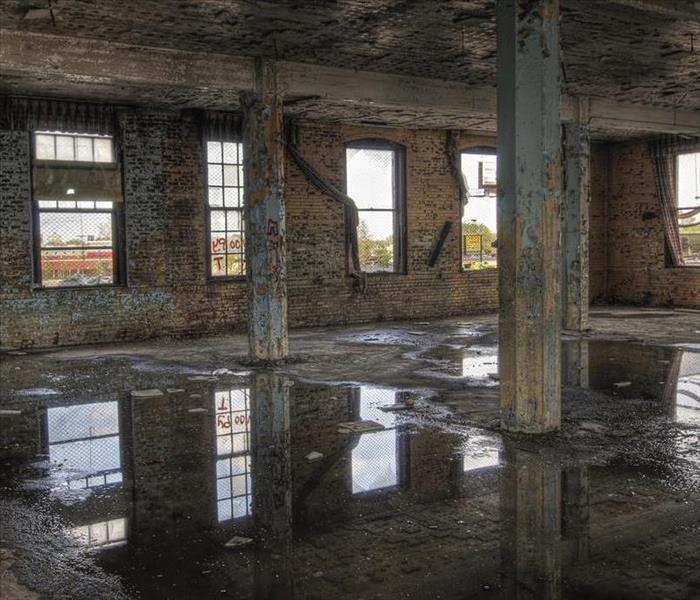5 Tips for Drying Water Damage
1/13/2022 (Permalink)
When your building floods, your first response should be calling water damage mitigation experts in Roanoke Rapids, NC to get the cleanup process started. Meanwhile, however, the water in your building is still causing damage as you wait for them to arrive. Here are a few water damage tips that you can use until they get there.
Important tips to consider as regards Drying Water Damage
Wear Protective Gear
One of the first cleaning tips you should follow concerns safety. Before you boldly enter the affected area, put on the necessary personal protective equipment:
- Rubber boots
- Gloves
- Water repellent coveralls
- Goggles
- Face mask
Once you are wearing the correct PPE, check to make sure the structure is sound enough to hold you and that there are no places where the water has come into contact with electricity. Then you should be able to proceed with caution to start the drying process.
Extract Excess Water
The longer water lingers in your building, the more damage it is likely to cause. Use a pump to quickly remove standing water, and follow up with a commercial wet vac to siphon out what remains. If you don't have a sump pump or a wet vac in your building, you should be able to rent or purchase them for a reasonable price. Spending a relatively small amount to have this equipment on hand in case it's needed can save you a lot of money in repairs.
Increase Airflow
Many experts who offer water damage tips suggest increasing the airflow in your building. Moving air helps surfaces dry out more quickly. If you have a lot of windows in your building, open as many of them as possible to create a cross breeze. Place fans in the area where the flood occurred to increase the speed at which the air flows through the space. Open drawers, cabinets and closets so that the moving air can dry them out, too.
Remove Soggy Items
The items in the flooded area must be removed before remediation begins. You can get a head start by taking them out of the space. Separate them into piles of things that can likely be saved and those that may need to be discarded. If any important documents are damp, it may be helpful to freeze them to disrupt the damage until the experts can get to them.
Dehumidify Space
It doesn't do a lot of good to dry surfaces if the air around them holds too much moisture. To prevent mold growth or other secondary damage after a pipe burst, you need to get the humidity level in your building under control. While increased airflow may help significantly, it alone may not be enough to bring the levels down to where they need to be. Use a dehumidifier in any room in which humidity is higher than 55%. This extra step helps to ensure that the rest of your drying efforts aren't in vain.
When your building is flooded, every minute counts. Reliable mitigation professionals may arrive soon after you call, but there are things you can do while you wait. These water damage tips help you get your building ready for a quick cleanup process.




 24/7 Emergency Service
24/7 Emergency Service
